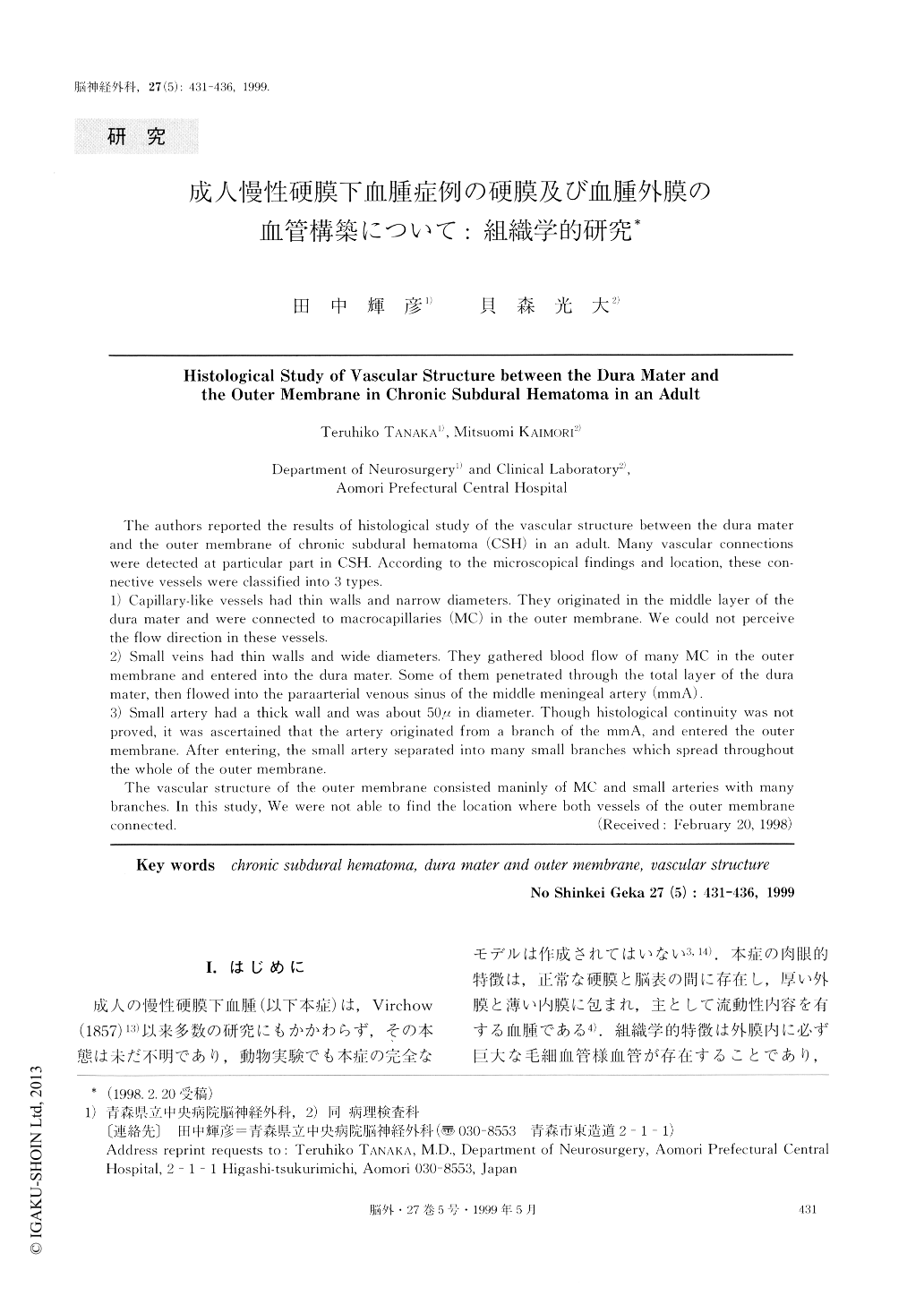Japanese
English
- 有料閲覧
- Abstract 文献概要
- 1ページ目 Look Inside
I.はじめに
成人の慢性硬膜下血腫(以下本症)は,Virchow(1857)13)以来多数の研究にもかかわらず,その本態は未だ不明であり,動物実験でも本症の完全なモデルは作成されてはいない3,14).本症の肉眼的特徴は,正常な硬膜と脳表の間に存在し,厚い外膜と薄い内膜に包まれ,主として流動性内容を有する血腫である4).組織学的特徴は外膜内に必ず巨大な毛細血管様血管が存在することであり,macrocapillary(MC)14),sinusoidal channel lay-er3,4),giant capillary6)などと呼ばれている.
私共は本症の外膜と硬膜の血管構築について検討したのでその結果を報告する.
The authors reported the results of histological study of the vascular structure between the dura mater and the outer membrane of chronic subdural hematoma (CSH) in an adult. Many vascular connections were detected at particular part in CSH. According to the microscopical findings and location, these con-nective vessels were classified into 3 types.
1) Capillary-like vessels had thin walls and narrow diameters. They originated in the middle layer of the dura mater and were connected to macrocapillaries (MC) in the outer membrane. We could not perceive the flow direction in these vessels.
2) Small veins had thin walls and wide diameters. They gathered blood flow of many MC in the outer membrane and entered into the dura mater. Some of them penetrated through the total layer of the dura mater, then flowed into the paraarterial venous sinus of the middle meningeal artery (mmA).
3) Small artery had a thick wall and was about 50μ in diameter. Though histological continuity was not proved, it was ascertained that the artery originated from a branch of the mmA, and entered the outer membrane. After entering, the small artery separated into many small branches which spread throughout the whole of the outer membrane.
The vascular structure of the outer membrane consisted maninly of MC and small arteries with many branches. In this study, We were not able to find the location where both vessels of the outer membrane connected.

Copyright © 1999, Igaku-Shoin Ltd. All rights reserved.


